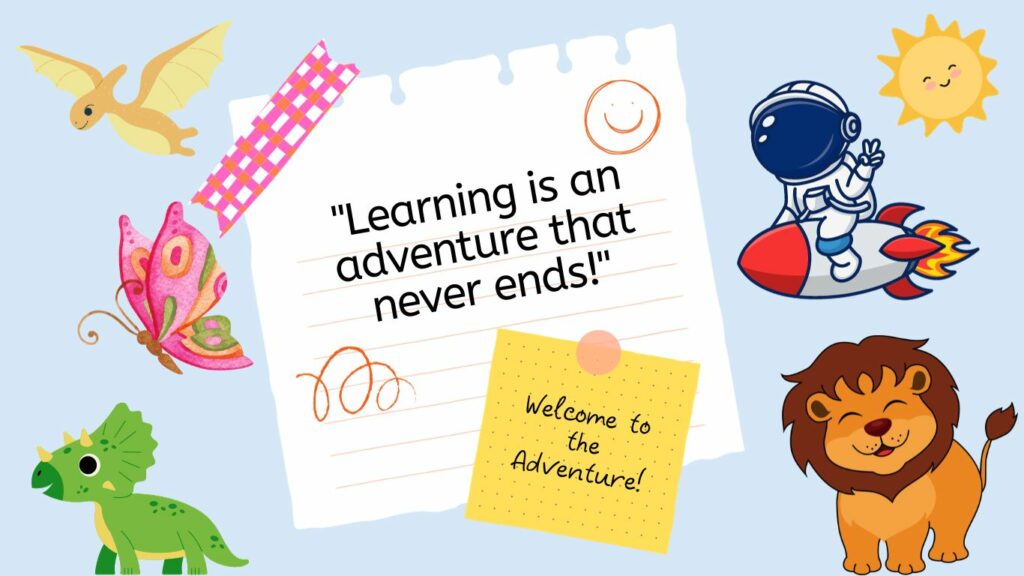Early Years Foundational Stage:
What is theme-based learning?
Theme-based learning teaching approach involves organizing educational activities, lessons, and experiences around a central theme or topic. It provides a framework for integrating various subjects and skills into a cohesive and engaging learning experience. Themes serve as a unifying concept, allowing children to explore and understand different aspects of a particular subject or idea in depth.

Key characteristics and components:
1. Central Theme:
- A theme is a broad topic or concept that serves as the focal point for learning activities. Examples of themes for children of 3-4 years might include oneself, family, body parts, seasons, fruits, vegetables, animals, community helpers, colours, friendship, or nature.
2. Integration of Subjects:
- It encourages the integration of multiple subjects. Lessons and activities related to the theme can span across various disciplines, such as language, math, understanding the world, social studies, and art. For example- Colours can be part of language, seasons can be part of understanding the world.
3. Hands-On Activities:
- Learning is often facilitated through hands-on activities, experiments, and projects that allow children to explore the theme tangibly. This can include art projects, science experiments, and collaborative group activities.
4. Storytelling and Literature:
- Reading books and stories related to the theme is a common component. This helps build vocabulary, comprehension, and a love for reading. Storytelling can be integrated into various subjects. For example- Children can read the story of Goldilocks and the Three Bears to learn about sizes.
5. Real-World Connections:
- It often emphasizes real-world connections, helping children relate what they learn to their everyday experiences. This context enhances understanding and makes learning more meaningful.
6. Creative Expression:
- Children are encouraged to express their understanding through creative activities such as drawing, painting, writing, and dramatic play. This fosters creativity and imagination.
7. Project-Based Learning:
- Projects related to the theme allow children to delve deeper into specific aspects, promoting critical thinking and problem-solving skills. These projects could be individual or collaborative. For example- Making rainbows using fingerprints.

8. Field Trips and Guest Speakers:
- Teachers may organize field trips or invite guest speakers to provide real-world experiences. This enhances learning by exposing children to different perspectives and environments.
9. Continuous Exploration:
- It is often structured in a way that allows for continuous exploration. As children express interest or curiosity, educators can adapt and extend the theme to accommodate their evolving understanding.
10. Assessment through Play:
- Assessment is often embedded in play and activities, allowing teachers to observe and gauge children’s understanding of the theme in a natural and non-intrusive manner.
11. Parental Involvement:
- Parents may be encouraged to participate in theme-related activities at home, fostering a connection between school and home environments.
12. Emotional Development:
- It can evoke emotions and connections to real-world experiences. It supports emotional intelligence, empathy, and the ability to express and understand feelings.
13. Creativity and Critical Thinking:
- It encourages creative expression and critical thinking through open-ended projects. It fosters problem-solving skills, creativity, and the ability to think critically about various concepts.
14. Individualized Learning:
- Children have the flexibility to explore aspects of the theme based on their interests and developmental levels. Individualized learning experiences support personalized growth, allowing each child to progress at their own pace.
15. Cultural and Global Awareness:
- It often includes the exploration of different cultures, traditions, and global perspectives. Children develop an appreciation for diversity, cultural awareness, and a broader understanding of the world around them.
16. Emotional Development:
- It can evoke emotions and connections to real-world experiences. It supports emotional intelligence, empathy, and the ability to express and understand feelings.
17. Montessori-based theme:
A Montessori-based theme typically revolves around the educational philosophy developed by Dr. Maria Montessori. This approach emphasizes fostering independence, freedom within limits, and respect for a child’s natural psychological, physical, and social development.

Theme-based Curriculum for Pre-primary:
Designing a curriculum for early childhood education involves integrating key developmental domains, fostering a love for learning, and providing a holistic and engaging educational experience.
Below is a sample outline for a theme-based curriculum for early childhood education:

Cross-Curricular Integration:
- Communication & Language:
- Storytelling, reading nature-themed books.
- Writing activities related to the theme.
- Mathematics:
- Counting natural objects.
- Sorting and classifying items from nature.
- Science:
- Simple experiments related to nature.
- Observing changes in plants and animals.
- Art & Crafts:
- Creative expression through nature-themed art and crafts.
- Using natural materials for art projects.
- Music and Movement:
- Nature-themed songs and dances.
- Gross motor activities related to the theme.
Assessment:
- Ongoing observation and documentation of children’s engagement and understanding.
- Portfolio creation showcasing individual and group projects.
- Parent-teacher conferences to discuss each child’s progress.
This is just an example, and you can adapt and modify the curriculum based on the specific needs, interests, and developmental levels of the children in your early childhood education setting. Regular reflection and flexibility are key components of a successful theme-based curriculum.


